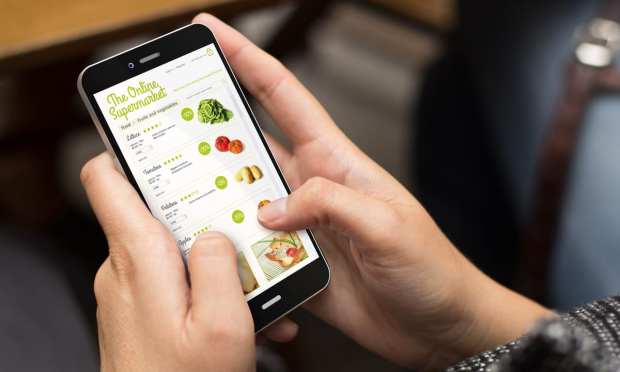Stor.ai CEO: Sticking The Landing Keeps eGrocery Customers Coming Back

Ordering groceries online from the comfort of one’s couch is not going anywhere. As recent PYMNTS data show, 72 percent of grocery shoppers now order their groceries online for delivery, with 28 percent more ordering for curbside pickup. As the category grows, solutions for grocers that worked when online orders were an almost negligible fraction of business —such as outsourcing fulfillment to third-party providers like Instacart— may not be able to carry these grocers into the future.
Stor.ai (formerly known as Self Point), the Israel-based grocery tech solution that made headlines earlier this year for a $21 million funding round, recently announced a partnership with delivery and fulfillment solution firm Bringg to provide solutions for every part of consumers’ grocery eCommerce journey.
“From the grocers’ perspective, [this partnership] allows them to take full ownership over their customers fulfillment and delivery experience from beginning to end,” Stor.ai CEO Orlee Tal told PYMNTS in an interview. “Many grocers today are considering a switching from Instacart and starting to build their own solution … Providing these tools to the grocers is … another step on the way to gaining back control of their eCommerce business.”
Meanwhile, from the customer’s perspective, Tal noted, the seamless integration of Bringg’s logistics tools into Stor.ai’s end-to-end eGrocery solution makes the end of the commerce path — checkout and the receipt of the order — a more positive experience. Per Daniel Kahneman and Barbara Fredrickson’s peak-end rule, which finds that people disproportionately consider the end point of their experience when evaluating past events, she noted, improving the end of the process makes eCommerce customers far more likely to return in the future.
The Third-Party Tradeoff
Look back to the mid-2010s, Tal recalled, “Online grocery was the black sheep of eCommerce — nothing was happening there. And then, in 2017, Amazon acquires Whole Foods, and the entire market panics.”
She reflected that, in the scramble to catch up, most grocers sought a turnkey solution to provide eGrocery as quickly as possible, making a third-party provider such as Instacart an attractive prospect. She noted that this worked before COVID-19, when online grocery’s share of total grocery was in the low single digits, but it reached about 10 percent during the pandemic, and analysts predict it will reach almost a quarter of total grocery in the next several years. Now, Tal said, grocers are “looking for solutions that … will make them more efficient, with better user experience and higher profitability.”
She noted the results of a 2019 study finding that 43 percent of Instacart users would switch to a different grocer if their first pick was no longer available on the platform. As Tal described it, “There’s very little loyalty to the grocer itself. They don’t own the data. They don’t own the customer experience.”
During the digital grocery boom early in the pandemic, these grocers did not have control of their fulfillment capabilities, unable to open new time slots when they wanted to or build out their delivery team.
Getting Personal
Going forward, Tal predicts that leading eGrocers will be those that can leverage their data and their software to create an ultra-personalized shopping experience across channels.
“What we envision as a company is that the customer is going to be the same customer online and in the store,” Tal explained, citing the example of a customer shopping with a smart cart with access to information about their previous purchases. The cart will be able to guide the customer to relevant parts of the store and to surface relevant deals and promotions.
This sort of personalization can also apply recommendation tools for the grocer’s in-store pickers fulfilling ecommerce orders, a solution much like Walmart’s new predictive grocery substitution AI.
“The system knows your purchasing history, what kind of your goods you bought in the past, what kind of replacements you confirmed in the past, or your look-alikes — what … people like you usually buy,” Tal said, adding that this knowledge allows the software to pick highly specific substitutions for out-of-stock items that the customer will enjoy.
Another key feature that will separate digital leaders from other grocers, Tal predicts, is the endless aisle. She believes that many more grocers will begin selling their digital space to non-grocery retailers, as global grocery giant Ahold Delhaize has announced intentions to do and as Kroger is already doing.
“Grocers have one huge benefit over other verticals, which is the customer attention,” Tal said. “There’s no other vertical where customers are coming to the store to the website, every week, and other eCommerce websites would kill to get customers visiting them every week.”
A Glimpse Into The Future
Given how quickly Israel vaccinated its citizens, Tal said, the country is “kind of the crystal ball of the world” when it comes to how consumers’ post-vaccine behaviors will look. She added that, in Israel, online grocery briefly dipped but then reversed course and returned to trending upward.
She believes that this pattern is a result not only of the appeal of eGrocery but also of the outdatedness of the in-store experience.
“I have this theory … that people were really looking to just get out of home and start shopping in the store, but they got into the stores, and, and suddenly it wasn’t that appealing,” Tal said. “So I think that maybe some of these people are reverting back to those habits of buying digitally, and … grocers will have to start investing in the digitization of the store.”
